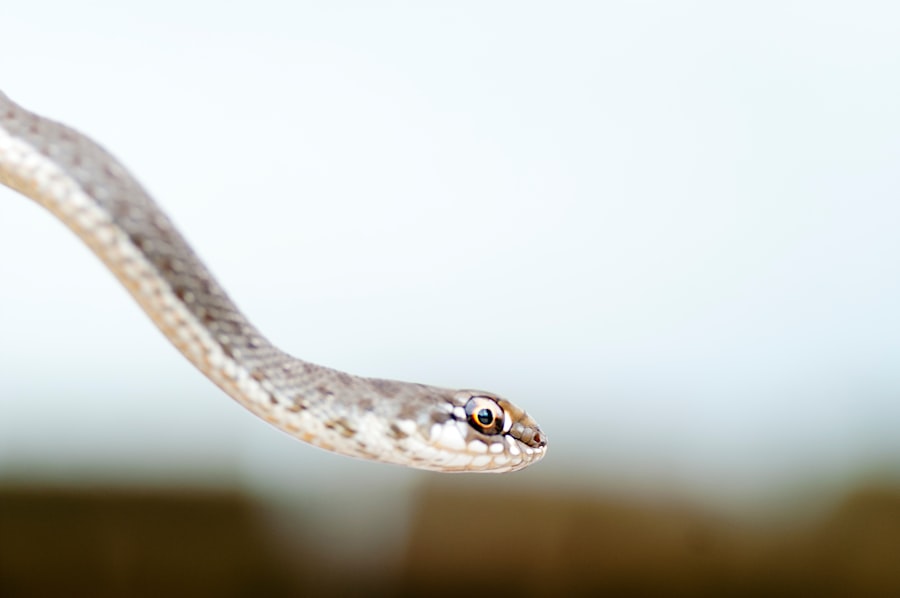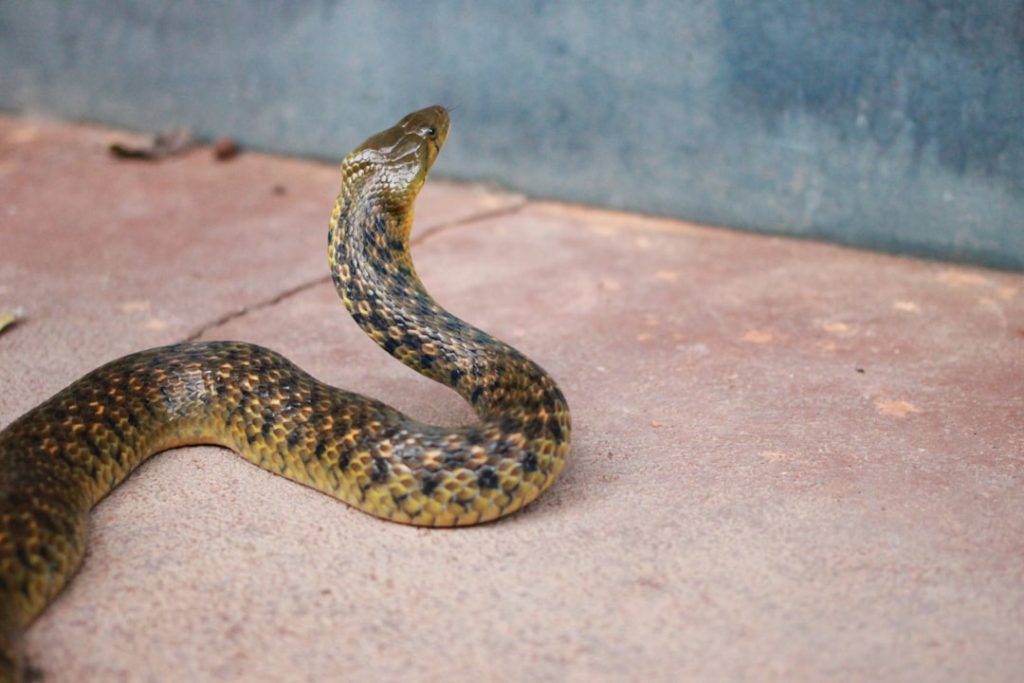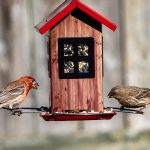Understanding the snake species present in your local area is essential for effectively protecting your chickens. Different regions harbor various snake species, each with distinct habits and behaviors. In North America, common venomous snakes that threaten chickens include the Eastern Diamondback Rattlesnake, Copperhead, and Eastern Coral Snake.
These species pose significant risks to both chickens and humans. Other parts of the world face different threats, such as the Black Mamba in Africa or the King Cobra in Asia. Familiarizing yourself with local snake species enables better preparation for potential encounters and implementation of appropriate protective measures for your flock.
Beyond identifying local snake species, understanding their habits and behaviors is crucial. Snakes exhibit varying activity patterns based on time of day, season, and habitat preferences. This knowledge allows for better anticipation of when and where snakes may pose a threat to chickens.
For instance, if a particular snake species is known to be more active at night, extra precautions can be taken to secure the coop during those hours. By acquiring comprehensive knowledge about local snake species, chicken owners can implement proactive measures to safeguard their flocks from potential harm.
Table of Contents
- 1 Securing the coop: Implementing physical barriers to keep snakes out
- 2 Creating a snake-proof environment: Removing potential hiding spots and nesting areas
- 3 Implementing natural deterrents: Using plants and predators to discourage snakes
- 4 Regular inspections: Checking the coop and surrounding areas for signs of snake activity
- 5 Educating your chickens: Training them to recognize and avoid snakes
- 6 Emergency response: Knowing what to do if a snake is discovered in the coop
- 7 FAQs
- 7.1 What are some common snakes that pose a threat to chickens?
- 7.2 How can I prevent snakes from entering the chicken coop?
- 7.3 Are there any natural predators of snakes that can help keep them away from the chicken coop?
- 7.4 What are some signs that a snake may be present in the chicken coop?
- 7.5 Are there any snake repellents that can be used to keep chickens safe?
Key Takeaways
- Identify common snake species in your area to understand the potential threat to your chickens
- Implement physical barriers such as wire mesh and fencing to keep snakes out of the coop
- Remove potential hiding spots and nesting areas such as tall grass and debris to create a snake-proof environment
- Use plants and predators like cats to naturally deter snakes from entering the coop area
- Regularly inspect the coop and surrounding areas for signs of snake activity to prevent infestations
- Train your chickens to recognize and avoid snakes to minimize the risk of encounters
- Know what to do in case of a snake emergency, such as contacting a professional for removal
Securing the coop: Implementing physical barriers to keep snakes out
Physical Barriers: A Key to Snake-Proofing
One of the most effective ways to safeguard your chickens from snakes is to install physical barriers around the coop and run. This can be achieved by fitting hardware cloth or mesh wire around the perimeter to prevent snakes from slithering through small openings. It’s crucial to ensure the mesh is tightly secured and extends below ground level to prevent snakes from burrowing underneath.
Sealing Gaps and Cracks: A Vital Step
Sealing any gaps or cracks in the coop structure is also essential in preventing snakes from gaining access. By creating a secure and snake-proof enclosure, you can significantly reduce the risk of snake encounters.
Coop Design and Layout: A Critical Consideration
The design and layout of the chicken enclosure play a critical role in securing the coop. For instance, elevating the coop off the ground on stilts or using a raised platform can make it more difficult for snakes to access. Additionally, keeping the area around the coop clear of debris and clutter can help eliminate potential hiding spots for snakes. By implementing these physical barriers and design considerations, you can create a more secure environment for your chickens and reduce the likelihood of snake intrusion.
Creating a snake-proof environment: Removing potential hiding spots and nesting areas

In addition to securing the coop itself, it is important to create a snake-proof environment by removing potential hiding spots and nesting areas around the chicken enclosure. Snakes are attracted to areas with ample cover and shelter, so it is important to keep the surrounding area clear of tall grass, brush, and debris where snakes could hide. Regularly mowing the grass and trimming vegetation around the coop can help eliminate these potential hiding spots and make the area less attractive to snakes.
Additionally, removing any piles of wood, rocks, or other debris where snakes could seek shelter can help reduce the likelihood of snake encounters. Another important consideration is to eliminate potential nesting areas for snakes around the coop. Snakes may seek out areas with abundant food sources such as rodents or insects, so it is important to keep the area around the coop free of these pests.
Implementing pest control measures such as sealing food containers, removing standing water, and keeping feed areas clean can help reduce the presence of potential prey for snakes. By creating a less hospitable environment for snakes, you can help protect your chickens from potential threats.
Implementing natural deterrents: Using plants and predators to discourage snakes
In addition to physical barriers and environmental modifications, implementing natural deterrents can help discourage snakes from approaching the chicken coop. Certain plants such as marigolds, wormwood, and lemongrass are known for their ability to repel snakes due to their strong scents or toxic properties. Planting these types of vegetation around the coop can help create a natural barrier that snakes are less likely to cross.
Additionally, introducing natural predators such as non-venomous snakes, owls, or hawks into the area can help keep snake populations in check and discourage them from approaching the coop. By leveraging these natural deterrents, you can create a more inhospitable environment for snakes and reduce the likelihood of encounters with your chickens. Another natural deterrent that can be effective in discouraging snakes is the use of certain essential oils or vinegar solutions.
Spraying these substances around the perimeter of the coop or in areas where snakes are likely to hide can help repel them due to their strong odors. Additionally, introducing certain predators such as cats or dogs into the area can help deter snakes from approaching. By using these natural deterrents in combination with other protective measures, you can create a more secure environment for your chickens and reduce the risk of snake encounters.
Regular inspections: Checking the coop and surrounding areas for signs of snake activity
Regular inspections of the coop and surrounding areas are essential for identifying and addressing potential signs of snake activity. This includes checking for shed snake skins, tracks, or droppings around the coop, as well as looking for any potential entry points or damage to physical barriers. By conducting these regular inspections, you can identify any potential issues early on and take proactive measures to address them.
Additionally, keeping the area around the coop clear of debris and clutter can help make it easier to spot any signs of snake activity. Another important aspect of regular inspections is to monitor for any changes in behavior or health among your chickens that could indicate a potential snake threat. For example, if you notice that your chickens are avoiding certain areas of the coop or seem agitated or stressed, it could be a sign that there is a snake nearby.
By being attentive to these subtle cues, you can take action to investigate further and address any potential threats before they escalate. By conducting regular inspections and monitoring your chickens closely, you can stay vigilant against potential snake activity and protect your flock.
Educating your chickens: Training them to recognize and avoid snakes

Introducing Chickens to Snake Decoys and Visual Aids
Chickens are naturally curious animals and may not always be aware of potential hazards in their environment. By introducing them to harmless snake decoys or using visual aids such as pictures or models of snakes, you can help familiarize them with what a snake looks like and teach them to recognize it as a potential threat.
Reinforcing Lessons with Positive Reinforcement
Using positive reinforcement techniques such as treats or praise when they exhibit cautious behavior around potential threats can help reinforce these lessons. This encourages your chickens to associate caution with safety and reinforces their learning.
Providing Safe Spaces for Chickens to Seek Shelter
Another important aspect of educating your chickens about snakes is to provide them with safe areas where they can seek shelter if they encounter a snake. This could include providing hiding spots or elevated perches within the coop where they can escape from potential danger. By creating these safe spaces, you can help reduce the risk of encounters and protect your chickens from harm.
By taking these proactive measures to educate your chickens about potential threats, you can help them stay safe and secure in their environment.
Emergency response: Knowing what to do if a snake is discovered in the coop
In the event that a snake is discovered in the coop, it is important to have a plan in place for how to respond effectively. The first step is to remain calm and avoid making sudden movements that could startle or provoke the snake. It is important to keep a safe distance from the snake and avoid attempting to handle or capture it yourself unless you are trained in snake handling techniques.
Instead, it is best to contact a professional wildlife removal service or animal control agency who can safely remove the snake from the coop. Another important aspect of emergency response is to ensure that all necessary precautions are taken to protect yourself and your chickens from potential harm. This includes keeping all humans and animals away from the area where the snake is located until it has been safely removed.
Additionally, it is important to thoroughly inspect the coop and surrounding areas for any potential entry points or damage that may have allowed the snake to gain access. By responding calmly and responsibly in the event of a snake encounter, you can help ensure the safety of both your chickens and yourself. In conclusion, protecting your chickens from potential snake threats requires a combination of proactive measures including understanding common snake species in your area, securing the coop with physical barriers, creating a snake-proof environment by removing hiding spots and nesting areas, implementing natural deterrents, conducting regular inspections, educating your chickens about potential threats, and knowing how to respond in an emergency situation.
By taking these steps, you can create a safer environment for your flock and reduce the risk of encounters with snakes.
If you’re looking for tips on how to keep your chickens safe from snakes, you may also be interested in learning about what vegetables quails eat. Check out this article to ensure you’re providing the best diet for your quails.
FAQs
What are some common snakes that pose a threat to chickens?
Some common snakes that pose a threat to chickens include rat snakes, black racers, and garter snakes. These snakes are known to prey on eggs, chicks, and even adult chickens.
How can I prevent snakes from entering the chicken coop?
To prevent snakes from entering the chicken coop, you can install hardware cloth or mesh wire with small openings around the coop to keep snakes out. Additionally, keeping the coop clean and free of debris can help deter snakes from making a home in the area.
Are there any natural predators of snakes that can help keep them away from the chicken coop?
Some natural predators of snakes include certain species of birds, such as hawks and owls, as well as some mammals like foxes and raccoons. Encouraging these natural predators to frequent the area around the chicken coop can help keep snakes at bay.
What are some signs that a snake may be present in the chicken coop?
Some signs that a snake may be present in the chicken coop include missing eggs, chicks, or adult chickens, as well as shed snake skins and snake droppings. It’s important to regularly inspect the coop for these signs and take action if a snake is suspected to be present.
Are there any snake repellents that can be used to keep chickens safe?
There are some natural snake repellents, such as essential oils like cinnamon, clove, and cedar, that can be used to deter snakes from the chicken coop. Additionally, some commercial snake repellent products are available, but it’s important to use them with caution and according to the manufacturer’s instructions.
Meet Walter, the feathered-friend fanatic of Florida! Nestled in the sunshine state, Walter struts through life with his feathered companions, clucking his way to happiness. With a coop that’s fancier than a five-star hotel, he’s the Don Juan of the chicken world. When he’s not teaching his hens to do the cha-cha, you’ll find him in a heated debate with his prized rooster, Sir Clucks-a-Lot. Walter’s poultry passion is no yolk; he’s the sunny-side-up guy you never knew you needed in your flock of friends!







